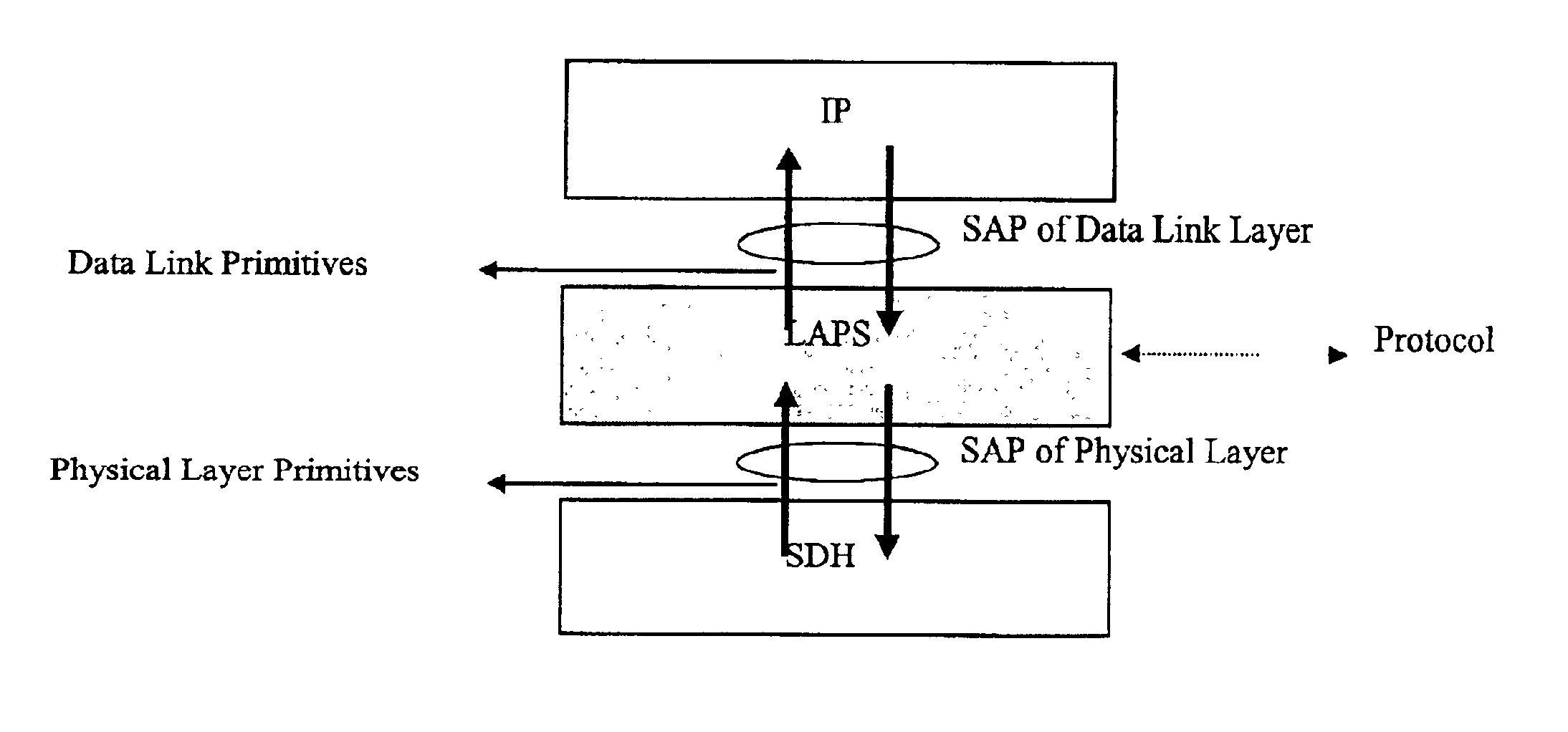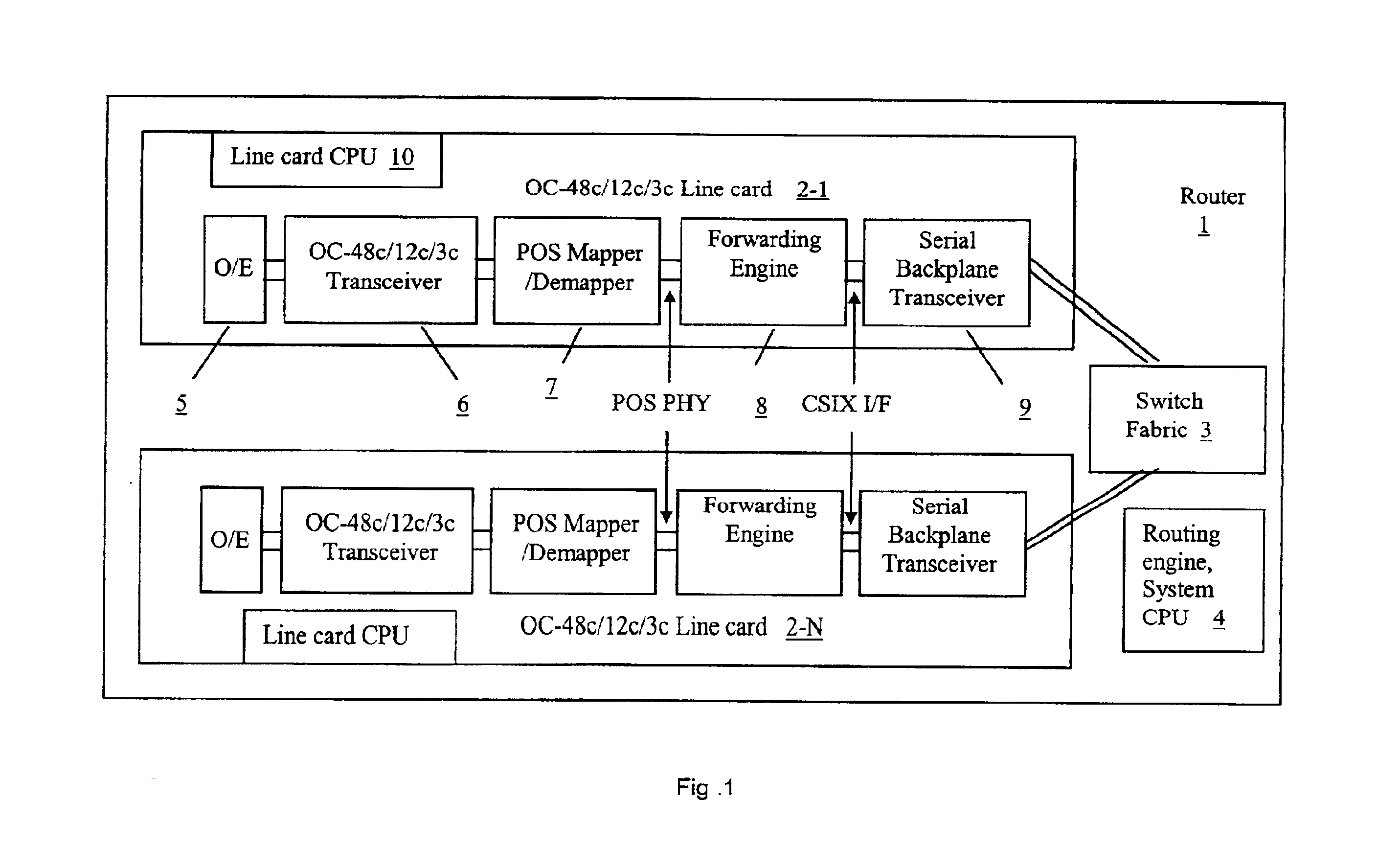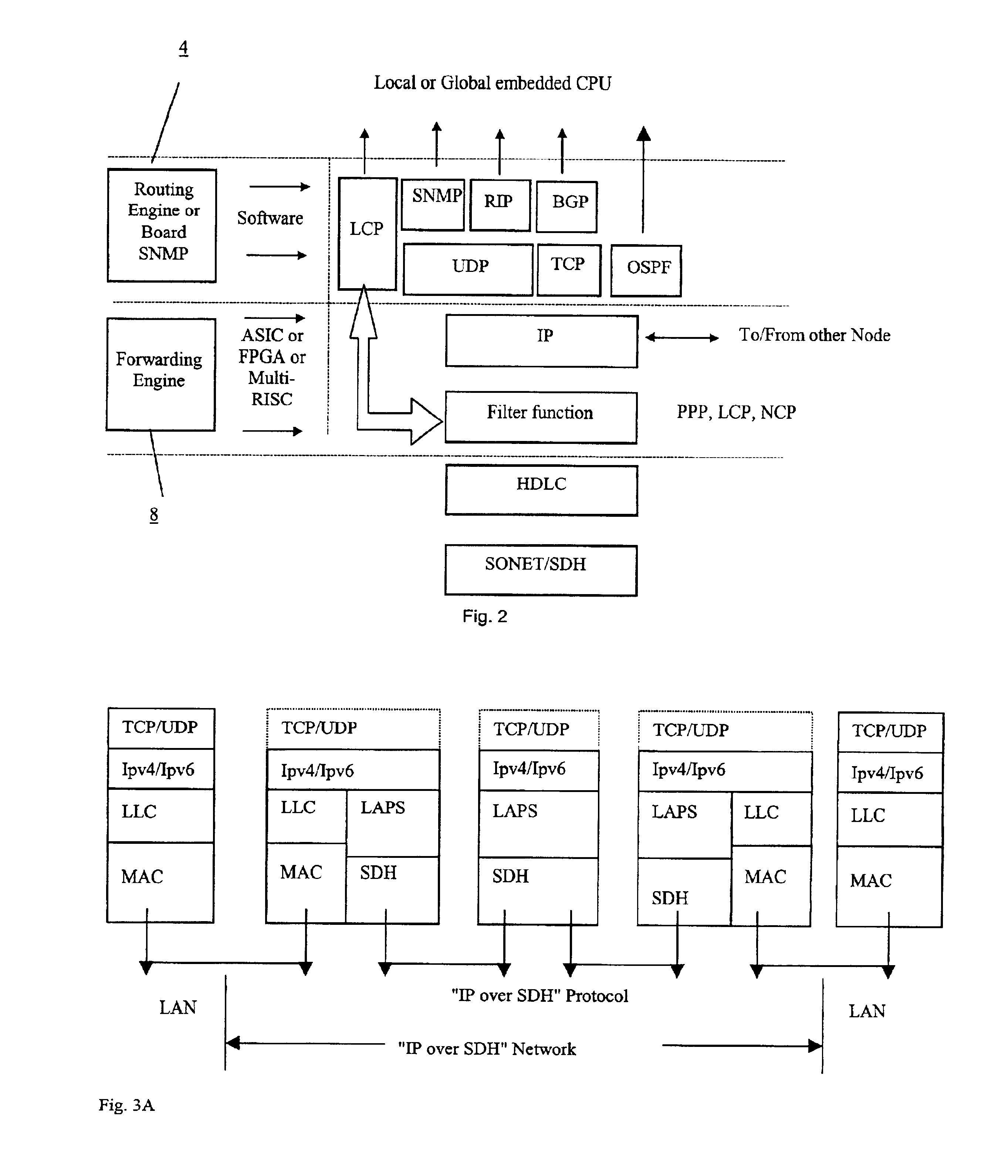Data transmission apparatus and method for transmitting data between physical layer side device and network layer device
a data transmission and physical layer technology, applied in the field of data networking and open system communication, can solve the problems of complex algorithm of ppp, inability to apply ip over sdh, and inability to apply /sonet, etc., and achieve the effect of low cost and suitable for high-speed data transmission applications
- Summary
- Abstract
- Description
- Claims
- Application Information
AI Technical Summary
Benefits of technology
Problems solved by technology
Method used
Image
Examples
first embodiment
[0080]In the transmit direction, the LAPS frames are encapsulated into the SONET / SDH SPE / VC. The POH and TOH / SOH are inserted, and the resulting STS signal is transmitted in byte wide format to a parallel / serial converter and then to a Fiber Optic transceiver. As shown in FIG. 7, according to the invention, the IOSL framer / de-framer comprises: in the transmitting direction, a TX FIFO 18 for receiving and buffering data packets from a network layer side device, for example, IP packets in conformity with Ipv4 or Ipv6, or PPP packets, or IS-IS, or other; a SAPI determining unit 19 for determining the type of the received data packets and generating a corresponding predetermined SAPI value; TX LAPS processing unit 22 for encapsulating the SAPI and data packets into LAPS frames, according to the format shown in FIG. 4; a scrambling unit 23 for LAPS frame; a SPE / VC pointer adjustment unit for adjusting pointer which indicating the location of the SPE / VC4; a SDH overhead insertion unit 33 ...
second embodiment
[0082]As shown in FIG. 7, the TX LAPS processing unit 22 may include a frame type indicator generating means 41 for generating an indicator which indicates the type of said first type of frames, and said frame type indicator is inserted in the address field during LAPS framing process. Said frame type indicator is set to “0x04” for LAPS frames, and “0xff” for PPP frames, and the other values are reserved for other types of frames, or for use of future frame formats. Specifically, for Ipv4 data packets, the frame type indicator in the address field is “0x04” (one single octet), the control octet is “0x03” (by default), and the SAPI identifier in the SAPI field is “0x0021” (two octets); for Ipv6 data packets, the SAPI field is changed to “0x0057”; and for PPP packets or PPP / HDLC solution, the frame type indicator in the address field is “0xff” (one single octet), the control octet is “0x03” (by default), and the SAPI identifier in the SAPI field is “0x0021” (two octets).
[0083]The abo...
PUM
 Login to View More
Login to View More Abstract
Description
Claims
Application Information
 Login to View More
Login to View More - R&D
- Intellectual Property
- Life Sciences
- Materials
- Tech Scout
- Unparalleled Data Quality
- Higher Quality Content
- 60% Fewer Hallucinations
Browse by: Latest US Patents, China's latest patents, Technical Efficacy Thesaurus, Application Domain, Technology Topic, Popular Technical Reports.
© 2025 PatSnap. All rights reserved.Legal|Privacy policy|Modern Slavery Act Transparency Statement|Sitemap|About US| Contact US: help@patsnap.com



